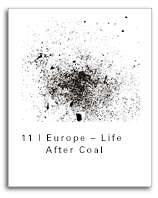-
Palvelut
Malminetsintä
Kaivoshankkeiden Arviointi
Ympäristö ja sosiaalinen vastuu
- Kaivoksen Vedenpoiston Kemia
- Maaperän ja pohjaveden kunnostus
- Ympäristö- Ja Sosiaalisten Vaikutusten Arviointi
- Hiilidioksidipäästöjen laskenta
- Sidosryhmien Ja Yhteisön Sitouttamisen Konsultointi
- Kaivostoimintaan Liittyvä Ympäristö- Ja Yhteiskunnallinen Suunnittelu
- Avolouhoksen kuljetusten sähköistäminen
- Ilmastonmuutos
- Uudelleenasuttaminen Ja Elinkeinon Elvyttäminen
- Ympäristöluvitus
- Ydinlaitosten turvallisuus
Geologia Ja Varannot
Kaivostekniikka
- Avolouhossuunnittelu Ja -Tekniikka
- Maanalaisten Kaivosten Suunnittelu Ja Tekniikka
- Kaivosgeologian Palvelut Suunnitteluun Ja Toiminnan Tehostamiseen
- Kaivostoiminnan Talous Ja Rahoitus
- Kaivostoiminnan Tukitehtävät
- Avolouhoksen kuljetusten sähköistäminen
- Kaivossimulaatio
- Sorroslouhinta
- Kaivoksen Ilmanvaihto
Vesihuolto
Kaivosgeotekniikka
Kaivoksen Sulkeminen
Kaivosjätteen Hallinta
Metallien Erottelu Ja Mineraalien Käsittely
Yhdyskunta- Ja Rakennustekniikka
Rakennegeologia
Mineraalivarantojen Arviointi
Kaivoksen Operatiivinen Tuki
Kaivoksen Ilmanvaihto
Pohjavesi
Vedenlaatu Ja -Käsittely
- Konsultit
- Projektit
- Tuotteet
-
Tietopankki
- Uutiset ja Tapahtumat















